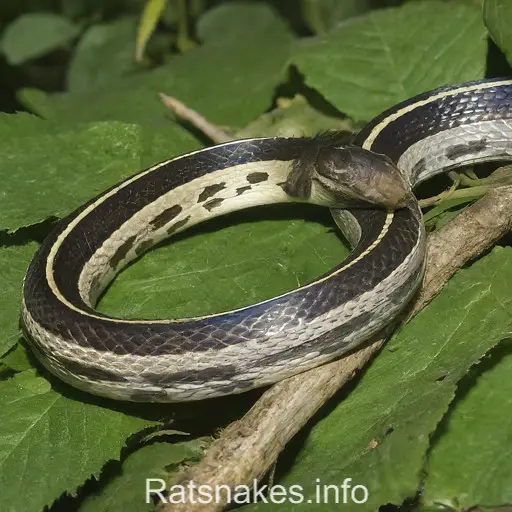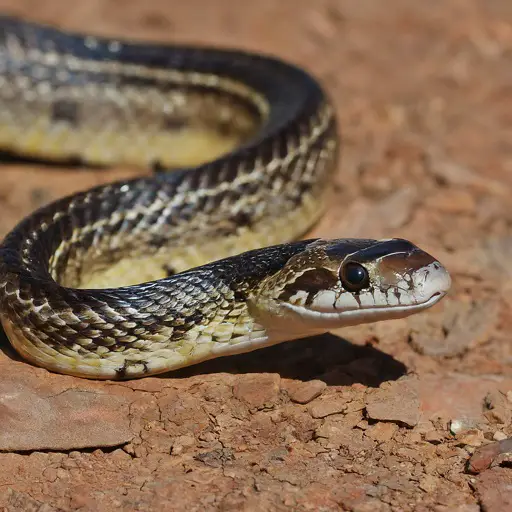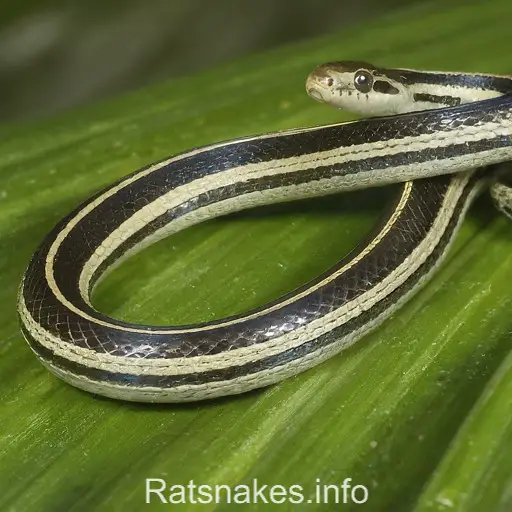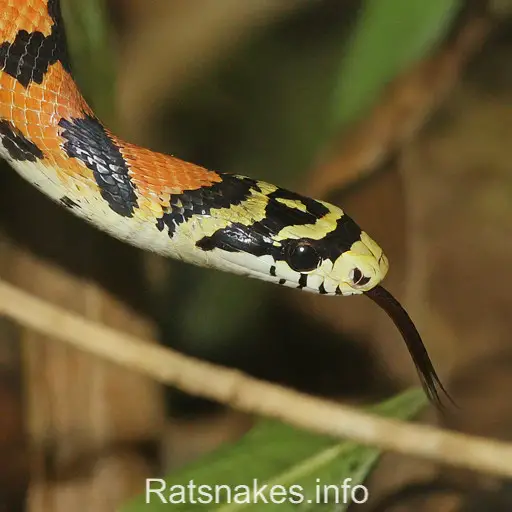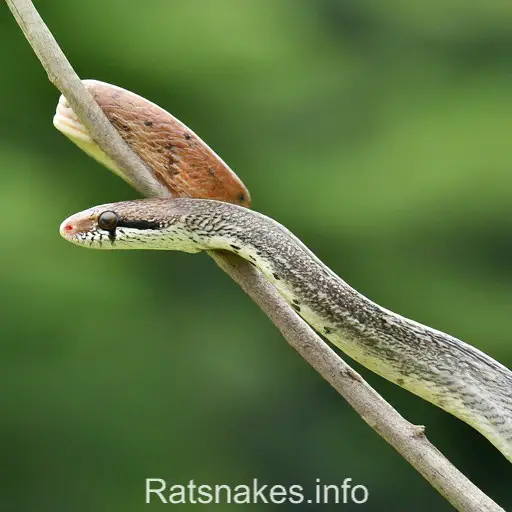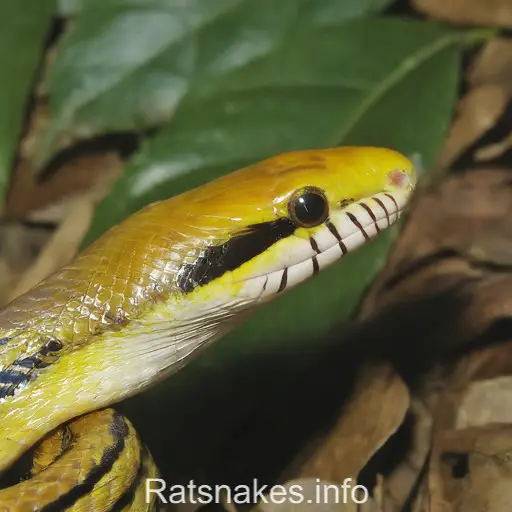
If you’re fascinated by the vibrant world of reptiles, you’re in for a treat with the Yellow Rat Snake (Pantherophis alleghaniensis quadrivittata). This striking serpent, known for its yellow coloration and slender build, is a sight to behold in the wild. Join us as we delve into the intriguing world of this fascinating species and uncover the secrets of its behavior, habitat, and unique characteristics.
As avid nature enthusiasts, we understand the allure of encountering these magnificent creatures in their natural habitat. From their distinctive appearance to their remarkable hunting techniques, Yellow Rat Snakes never fail to captivate our attention. Join us on a journey of discovery as we explore the wonders of the Yellow Rat Snake and gain a deeper appreciation for the biodiversity of our natural world.
Overview of the Yellow Rat Snake
The Yellow Rat Snake, scientifically known as Pantherophis alleghaniensis quadrivittata, is a striking reptile found primarily in the southeastern United States. These nonvenomous constrictors can grow up to 6 feet in length, showcasing a vibrant yellow coloration with four dark stripes running down their back.
Yellow Rat Snakes are proficient climbers and are often found in a variety of habitats, including pine forests, swamps, and marshes. They are known for their excellent hunting skills, preying on small mammals, birds, and bird eggs. These snakes play a crucial role in maintaining the ecological balance by controlling rodent populations.
One distinctive characteristic of the Yellow Rat Snake is their calm and docile nature, making them a popular choice among reptile enthusiasts. They are expert escape artists and can often be seen basking in the sun to regulate their body temperature. Yellow Rat Snakes are essential contributors to their ecosystems, serving as both predator and prey in the intricate web of wildlife.
Physical Characteristics
When it comes to Physical Characteristics, the Yellow Rat Snake is truly a sight to behold. Here are some key features that set this species apart:
- Length: These reptiles can reach lengths of up to 6 feet, making them quite impressive in size.
- Coloration: Sporting a vibrant yellow hue with four distinctive dark stripes running along their back, Yellow Rat Snakes are easily recognizable.
- Pattern: The series of stripes on their bodies adds to their unique visual appeal, making them stand out in their natural habitats.
- Scales: Their smooth scales give them a sleek appearance and contribute to their ability to move gracefully, whether on the ground or when climbing trees.
- Eyes: Yellow Rat Snakes have round pupils and keen eyesight, aiding them in hunting down prey efficiently.
- Musculature: With a powerful body and strong muscles, these constrictors are well-equipped for capturing and subduing their meals.
These physical traits not only make the Yellow Rat Snake an intriguing subject for wildlife enthusiasts but also play a crucial role in their survival and success in the wild.
Habitat and Distribution
Yellow Rat Snakes, also known as Pantherophis alleghaniensis quadrivittata, are primarily found in the southeastern United States, including states like Florida, Georgia, and South Carolina. Their preferred habitats include forests, swamps, fields, and marshes where they can easily find prey and seek shelter.
These snakes are arboreal and semi-aquatic, utilizing trees, shrubs, and bodies of water within their range. With a wide distribution across various ecosystems, from coastal plains to upland forests, Yellow Rat Snakes showcase remarkable adaptability to different environments.
Behavior and Diet
Yellow Rat Snakes are nocturnal creatures, primarily active during the night. They have a docile temperament, often avoiding confrontation when encountered by humans. When startled or threatened, they may vibrate their tails or emit a foul-smelling musk as a defense mechanism. These snakes are excellent climbers, utilizing their agility to navigate trees and shrubs in search of prey.
In terms of diet, Yellow Rat Snakes are constrictors that feed on a varied menu of small mammals, birds, amphibians, and reptiles. Their diet includes rodents like mice and rats, making them beneficial to have around agricultural areas to help control pest populations. They are also known to consume bird eggs when the opportunity arises, showcasing their adaptability in finding food sources in their diverse habitats.
Yellow Rat Snakes play a crucial role in maintaining the ecological balance within their ecosystems by controlling populations of small animals. Their feeding habits contribute to the overall health of the ecosystem they inhabit, showcasing the interconnectedness of species in nature.
Conservation Status
Yellow Rat Snakes, like many other snake species, face threats in the wild that impact their populations. Here are some key points regarding their conservation status:
- Habitat loss: Yellow Rat Snakes are losing their natural habitats due to deforestation and urbanization, leading to a decline in their numbers.
- Human activities: Encounters with humans, including road mortality and illegal collection, pose additional risks to Yellow Rat Snake populations.
- Climate change: Changing climate patterns can affect the breeding, hibernation, and overall survival of these snakes.
As responsible stewards of our environment, it is crucial to raise awareness about the conservation needs of the Yellow Rat Snake. By understanding the challenges they face, we can take steps to protect their habitats and ensure their continued presence in the ecosystems they inhabit.
Key Takeaways
- Yellow Rat Snakes (Pantherophis alleghaniensis quadrivittata) are striking reptiles found in the southeastern United States known for their vibrant yellow coloration and slender build.
- These nonvenomous constrictors can grow up to 6 feet in length and play a vital role in controlling rodent populations in their habitats.
- Yellow Rat Snakes have a calm and docile nature, are proficient climbers, and are active hunters preying on small mammals, birds, and bird eggs.
- Their physical characteristics, including vivid yellow coloration, dark stripes, smooth scales, and strong musculature, make them well-adapted to thrive in various environments.
- Yellow Rat Snakes prefer habitats like forests, swamps, fields, and marshes in the southeastern US and are nocturnal creatures with a varied diet consisting of small mammals, birds, amphibians, and reptiles.
- Conservation efforts are essential due to threats such as habitat loss, human activities, and climate change impacting Yellow Rat Snake populations.
Conclusion
Understanding the conservation challenges faced by Yellow Rat Snakes is crucial for their survival. Habitat loss, human activities, and climate change pose significant threats to these fascinating reptiles. By raising awareness about their conservation needs, we can help protect their habitats and ensure their continued presence in our ecosystems. It is vital that we take action to preserve the natural balance and diversity that Yellow Rat Snakes contribute to. Let’s work together to safeguard these snakes and the environments they inhabit for future generations to appreciate and enjoy.

